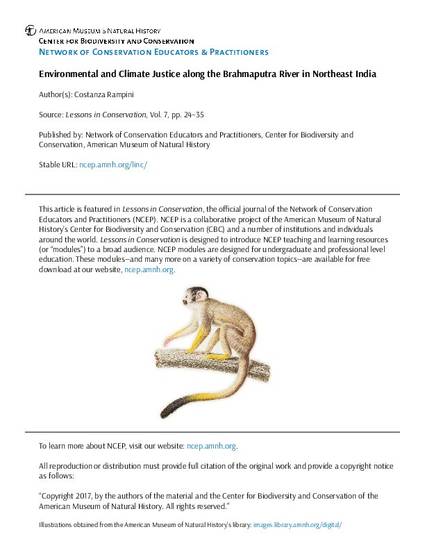
Article
Environmental and Climate Justice along the Brahmaputra River in Northeast India
Lessons in Conservation
(2017)
Abstract
The glaciers of the Himalayas are the source of all of Asia’s major rivers and are crucial to Asia’s water supply, economies, and livelihoods. The Himalayan region is uniquely vulnerable to the impacts of anthropogenic climate change, while also becoming one of the most dammed regions in the world. This case study explores the unequal distribution of the impacts of climate change and dam building along the Brahmaputra River in Northeast India. It examines how the combined impacts of these two processes negatively affect local communities and explores environmental and climate justice issues. In discussing climate change impacts and hydropower development in Northeast India, this case study presents questions on the role of dams as a solution to climate change and as a form of sustainable development.
Keywords
- Case study
Disciplines
Publication Date
January, 2017
Publisher Statement
This article was published in Lessons in Conservation, volume 7, 2017. It can also be found online at this link. Copyright 2017, by the authors of the material and the Center for Biodiversity and Conservation of the American Museum of Natural History. All rights reserved.
All reproduction or distribution must provide full citation of the original work and provide the above copyright notice.
Citation Information
Costanza Rampini. "Environmental and Climate Justice along the Brahmaputra River in Northeast India" Lessons in Conservation Vol. 7 (2017) p. 24 - 35 ISSN: 1938-7024 Available at: http://works.bepress.com/costanza-rampini/7/
